Thread security analysis
1, The source of concurrent programming problems
Visibility, which is caused by the multi-core cpu cache. Each cpu accesses its own cache, and the data in the cache of different CPUs is invisible. (cache is used to improve I/O storage speed)
Atomicity, caused by thread switching, one code in Java corresponds to multiple underlying codes (threads switch during the execution of multiple codes).
Order: the compiler will change the order of the code when compiling the code (single thread has no impact, and multi thread has a greater impact)
1. Visibility issues
Caused by multi-core CPUs accessing their respective caches
When different CPUs execute threads, the data accessed by CPUs is caused by the cache in their respective CPUs
In the following figure: the operation of thread A on variable X is not visible to thread B. No visibility.
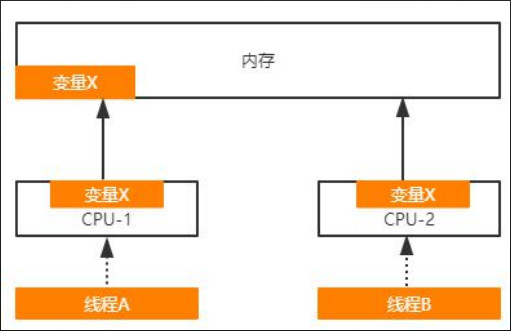
When stop is not modified by volatile, modifying the stop value in the main thread will not affect the stop value in the child thread.
public class VisableDemo {
// public static boolean stop=false;
// volatile addresses visibility, [ordering]
public volatile static boolean stop=false;
public static void main(String[] args) throws InterruptedException {
Thread thread=new Thread(()->{
int i=0;
while(!stop){
i++;
}
System.out.println("Thread end: result:"+i);
});
thread.start();
System.out.println("begin start thread");
Thread.sleep(1000);
stop=true; //Modify the stop value in the main thread so that the above thread can end execution
}
}
2. Atomicity
Caused by thread switching
count + + may only be a single line of instructions in Java, but there may be multiple instructions at the bottom.
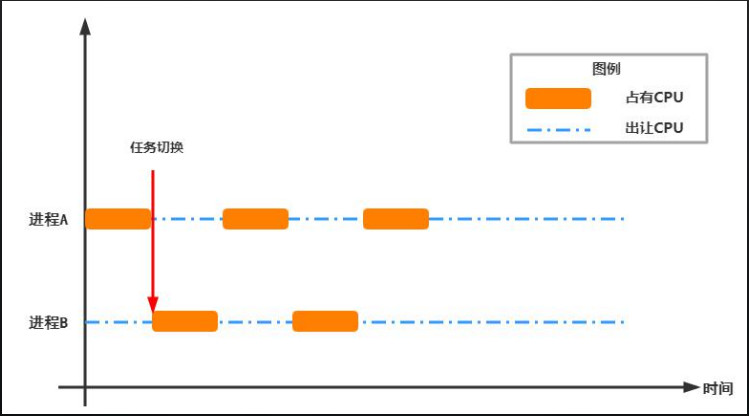
public class AtomicDemo {
public static int count=0;
public static void incr(){
try {
Thread.sleep(1);
} catch (InterruptedException e) {
e.printStackTrace();
}
count++; //Count + + is not an atomic operation: count + + (only executed by one thread)
}
public static void main(String[] args) throws InterruptedException {
for (int i = 0; i < 1000; i++) {
// Create 1000 threads
new Thread(AtomicDemo::incr).start();
}
// In order to test the display effect, a delay is made to wait for the sub thread to complete execution.
Thread.sleep(4000);
System.out.println("result:"+i);
}
}
Output result: it must be a value less than or equal to 1000
View count + + source code
IDEA click the byte code corresponding to the file class, mail open in terminal
javap -v AtomicDemo.class
The corresponding code of count + + is as follows: it is not an atomic instruction. It either succeeds or fails at the same time.
12: getstatic 15: iconst_1 16: iadd 17: putstatic
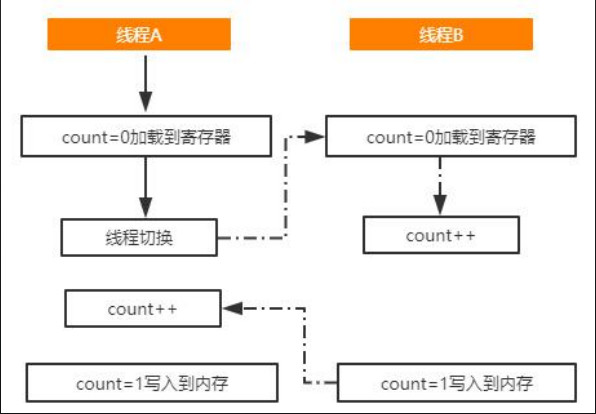
3. Ordering problems caused by compiler
For example: final domain problem
Assign a value to a variable that is not final modified in the constructor.
This assignment is placed outside the constructor by the compiler.

2, Java Memory Model -- how does Java solve the problem of visibility ordering
Java Memory Model: a set of software mechanism for Java to solve visibility, atomicity and ordering.
volatile, synchronized, final keywords
Happens before principle (tell you which scenes will not have visibility problems)
3, synchronized keyword
Atomicity: Solutions (Synchronized, AtomicXXX, Lock)
Visibility: Solutions (Synchronized, Volatile)
Orderliness: Solutions (Synchronized, Volatile)
synchronized: the code executed by a single thread at the same time has no atomicity problem. (instruction reordering doesn't matter)
synchronized modified code can only be executed by one thread at a time. Although it can not solve the ordering problem, it can solve the ordering problem because there is only one thread.
Scope of synchronized modification:
- Modify instance method: lock the same object
- Modify static methods: the object of the lock is a class
- Modifier code block: lock (object or class) can be specified
3.1 the essence of preemptive lock is mutual exclusion.
How to realize mutual exclusion?
- shared resource
- It can be a tag, 0 has no lock and 1 has lock.
Object lock = new Object;
public void m2() {
// Code block
synchronied (lock) {
}
}
Lock stores lock related information
3.2 MarkWord object header
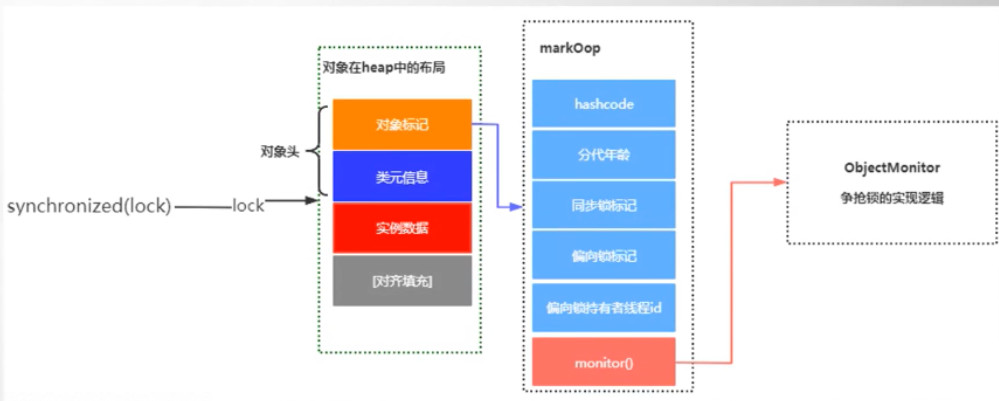
3.3 there are four main lock states:
- Unlocked state
- Biased lock status: when there is no thread competition, thread a enters the synchronous code block, and the lock is biased to thread A. thread a does not need to preempt the lock the next time it comes in.
- Lightweight lock status: multiple threads preempt the lock, and upgrade the lock on the basis of partial lock. (unlocked state - optimization mechanism)
- Avoid thread blocking through spin lock blocking.
- Heavyweight lock status.

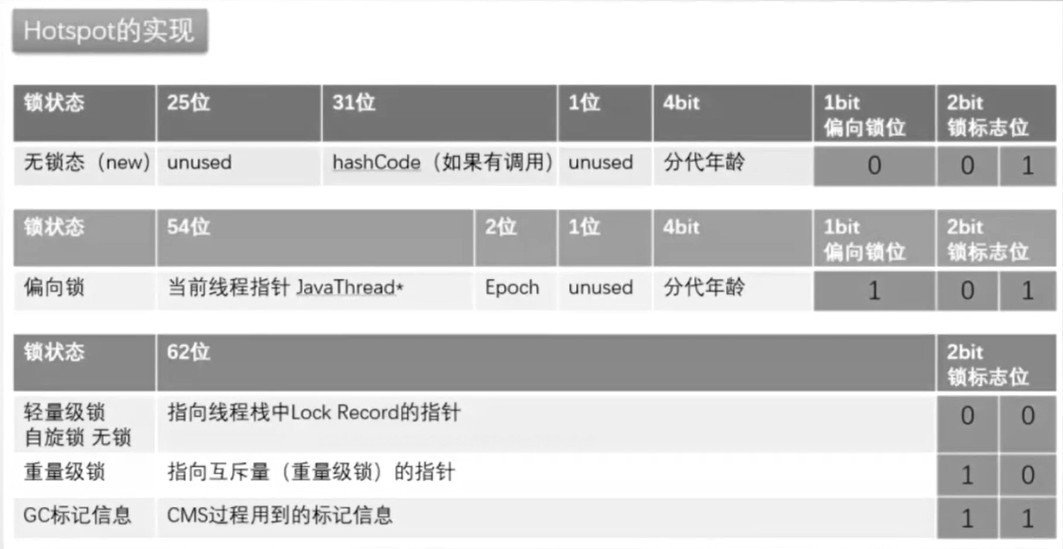
3.4 CAS mechanism
The following operations must be atomic
Modify the tag of the lock
Modify the pointing of thread pointer
CompareAndSwap(old,except,update)
old: ThreadA
except: ThreadB
update: ThreadC
4, Volatile keyword
volatile: can be used to solve visibility and order.
The nature of visibility:
The processing speed of CPU is fast and the reading speed of memory and disk is slow, which leads to the waste of CPU resources. Introduce CPU to increase cache.
5, final domain: prevent instruction reordering and solve visibility problems
Once the reference is declared final, the reference cannot be changed.
Reference ppt
For the final domain, the compiler and processor follow two reordering rules.
-
Write to a final field in the constructor (assign a value to the variable modified by final in the constructor)
And then assign the reference of the constructed object to a reference variable. The two operations cannot be reordered.
-
The first reading of a reference to an object containing the final field and the subsequent first reading of the final field cannot be reordered between the two operations.
These two rules can prevent instruction reordering to solve the visibility problem.
1 write the reordering rule of the final field
The value of i may be equal to 0, but the value of j must be equal to 2
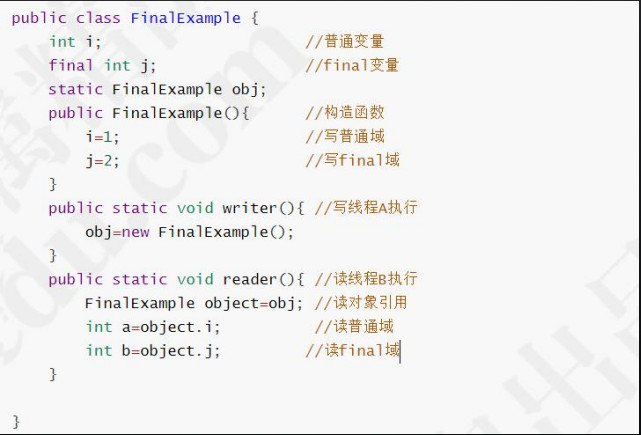
The operation of writing ordinary variable i is reordered outside the constructor by the compiler.
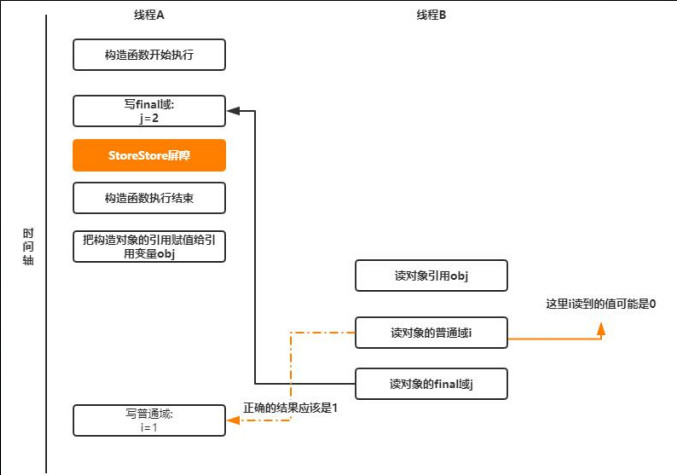
2 read the reordering rules of the final field
In a thread, the first read object refers to the final field contained in the first read object,
JMM prohibits the processor from reordering these two operations, and the compiler will insert a LoadLoad barrier before the operation of reading the final domain.
In the above code, you can read the common field i code before writing the common field i
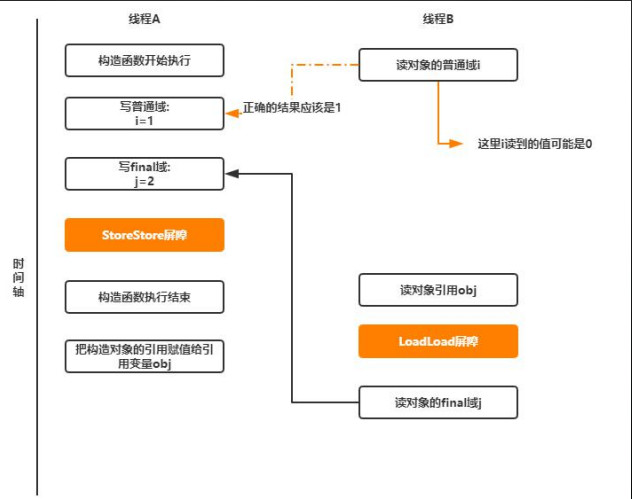
6, Happens before rule
Reference ppt
- Program sequencing rule: no matter how the program is reordered, the execution result of a single thread will not change.
- Monitor lock rule: the unlocking of a lock is before the yoke of this lock in the subsequent sequence.
- Volatile variable rule: writes to a volatile field happen before any subsequent reads to the volatile field
- Transitivity rule: A happens before B B happens before C.
- Start rule: if thread A performs the operation threadb Start() (start thread b), then the threadb of thread A The start () operation happens before any operation in thread B
- Join() rule: if thread A performs the operation threadb Join() and return successfully, then any operation in thread B happens before thread A from threadb The join() operation returned successfully
7, Atomic Automic
Synchronized can guarantee atomicity. Because synchronized code can only be executed by one thread at a time, there is no atomicity problem.
8, Implementation principle of ThreadLocal
Space for each thread to store data independently
public class ThreadLocalDemo {
private static Integer num=0;
public static final ThreadLocal<Integer> local = new ThreadLocal<Integer>(){
protected Integer initialValue(){
return 0; //Initial value
}
};
public static final ThreadLocal<Integer> local1 = new ThreadLocal<Integer>();
public static void main(String[] args) {
Thread[] threads = new Thread[5];
//I hope every thread gets 0
for (int i = 0; i < 5; i++) {
threads[i]=new Thread(()->{
// num+=5;
int num=local.get(); //Get the initial value
local1.get();
num += 5;
local.set(num);
System.out.println(Thread.currentThread().getName()+"->"+num);
},"Thread-"+i);
}
for(Thread thread:threads){
thread.start();
}
}
}